 About Author:
About Author:
Himani Sharma
B.Pharm, RGTU
shimani53@gmail.com
ABSTRACT
Nanotechnology provide innovative tools that shed greater light on life cycle of normal cells and the point at which molecular processes and changes within cells become correlated with development of cancer. It should be possible to obtain large amount of information from a small source. They aid in analysis of parameters such as cellular mechanics, morphology and cytoskeleton which has been hard to achieve using conventional technology. Nano devices can detect cancer cells, identify cancer signatures and provide targeted delivery of anti cancer therapeutics and contrast agents to tumour cells. Nanotechnology is potential tool that could help detect the molecular changes and assist in focusing on preventive efforts. Nanotechnologies for medical applications have been maturing. Several therapeutic formulations entered clinical trials and are expected to have an impact on how cancer treatment is done in the future.
[adsense:336x280:8701650588]
INTRODUCTION
* Nanotechnology will change the very foundations of cancer diagnosis, treatment and prevention.
* The field of research that deals with the engineering and creation of things from materials that are less than 100 nanometers in size, especially single atoms or molecules.
* Nanotechnology is the creation of useful materials, devices, and systems through the manipulation of matter on this miniscule scale.
* The emerging field of nanotechnology involves scientists from many different disciplines, including physicists, chemists, engineers, and biologists.
* There are many interesting nanodevices being developed that have a potential to improve cancer detection, diagnosis, and treatment.
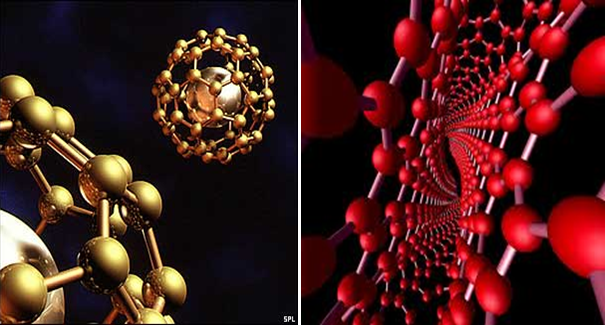
[adsense:468x15:2204050025]
CONCEPT OF NANODEVICES USED IN CANCER TREATMENT
They are smaller than human cells 10,000 to 20,000 nanometers in diameter and similar in size to large biological macromolecules such as enzymes and receptors.Nanostructures can be so small that the body may clear them too rapidly for them to be effective indetection or imaging. Larger nanoparticles may accumulate in vital organs, creating a toxicity problem. Scientists will need to consider these factors as they attempt to create nanodevices the body will accept.
The goal of nanodevices:
* Recognize Precancerous Or Cancerous Cells.
* Release A Drug That Targets Only Cancer Cells.
* Report back On the Effectiveness Of the Treatment.

1. PHOTOTHERMAL ABLATION
* Cancer cells die at 42° C (108° F), normal cells die at about 46° C (115° F)
* Current optical fiber treatment
* Nanoparticles can be tuned to be Excited only by certain ranges of light
* Hollow, gold nanospheres are 50 times more effective at absorbing light near the infrared than solid gold nanoparticles
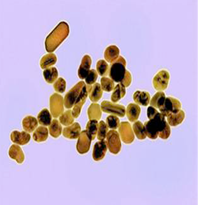
2. MRI CONTRAST AGENTS
* Using a metal-organic framework with metals such as gadolinium.
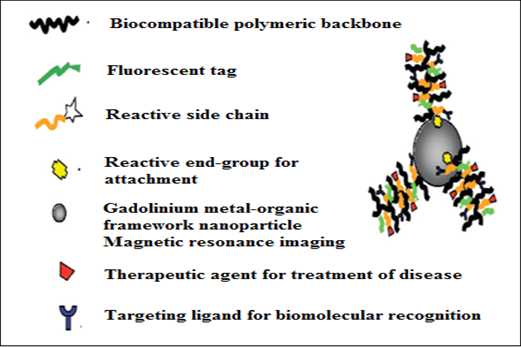
NOW YOU CAN ALSO PUBLISH YOUR ARTICLE ONLINE.
SUBMIT YOUR ARTICLE/PROJECT AT articles@pharmatutor.org
Subscribe to PharmaTutor Alerts by Email
FIND OUT MORE ARTICLES AT OUR DATABASE
3. FLUORESCENT MICROSCOPY
* These are used in detection of cancer cells.
* serve as dual detection devices for both magnetic and r
* resonance microscopy.
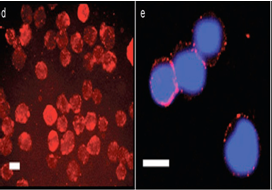
4. NANOSHELLS
* Nanoshells are miniscule beads coated with gold. By manipulating the thickness of the layers making up the nanoshells.
* Beads to Absorb Specific Wavelengths of Light.
* The Heat Generated By the Light-Absorbing .
* Nanoshells Has Successfully Killed Tumor Cells While Leaving Neighboring Cells Intact.
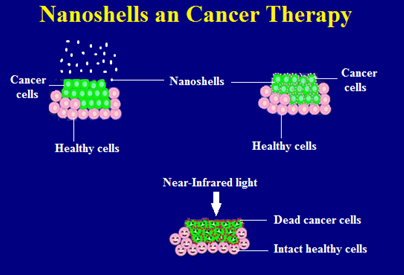
5. DENDRIMERS
* It is a man-made molecule.
* This shape gives them vast amounts of surface area.
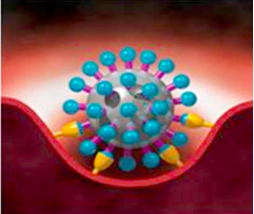
A single dendrimer can carry a molecule that
* Recognizes Cancer Cells.
* A Therapeutic Agent To Kill Those Cells .
* A Molecule That Recognizes the Signals Of Cell Death.
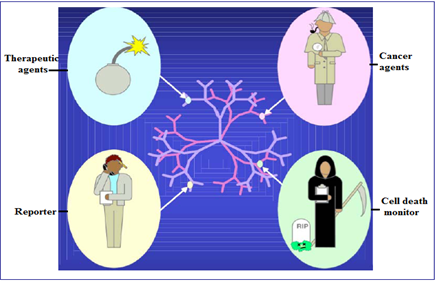
6. CANTILEVER
* Coated with molecules (like antibodies).
* Capable of binding to specific molecules that only cancer cells secrete.
* Used in cancer detection.
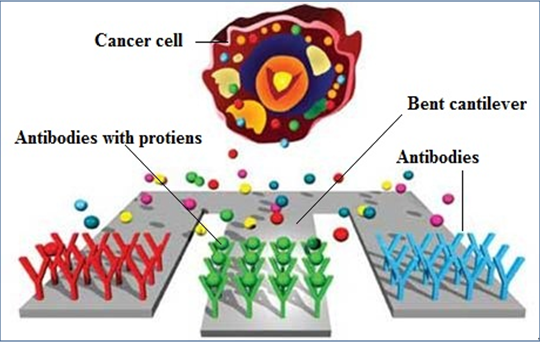
CONCLUSION-
* Unique properties of cancer cells that can be exploited by nanoparticles to target the Cancer cells.
* On this basis highly specific nanoparticle production can be started for the discovery, treatment and prevention of cancer growth. It is safer and more consistent.
Target- Turning Cancer into a chronic, but manageable disease within the next 15-20 years.Human clinical trials within the next 2-3 years
REFERENCES:
* Rathy Ravindran; 2011; Nano Technology In Cancer Diagnosis And Treatment: An Overview; Oral & Maxillofacial pathology journal; vol-2, pg.no.-101-106.
* Hirak K.Patra.2007; Cell selective response to gold nanoparticles; Elsevier publication; vol-3, pg.no.-111-119.
NOW YOU CAN ALSO PUBLISH YOUR ARTICLE ONLINE.
SUBMIT YOUR ARTICLE/PROJECT AT articles@pharmatutor.org
Subscribe to PharmaTutor Alerts by Email
FIND OUT MORE ARTICLES AT OUR DATABASE











